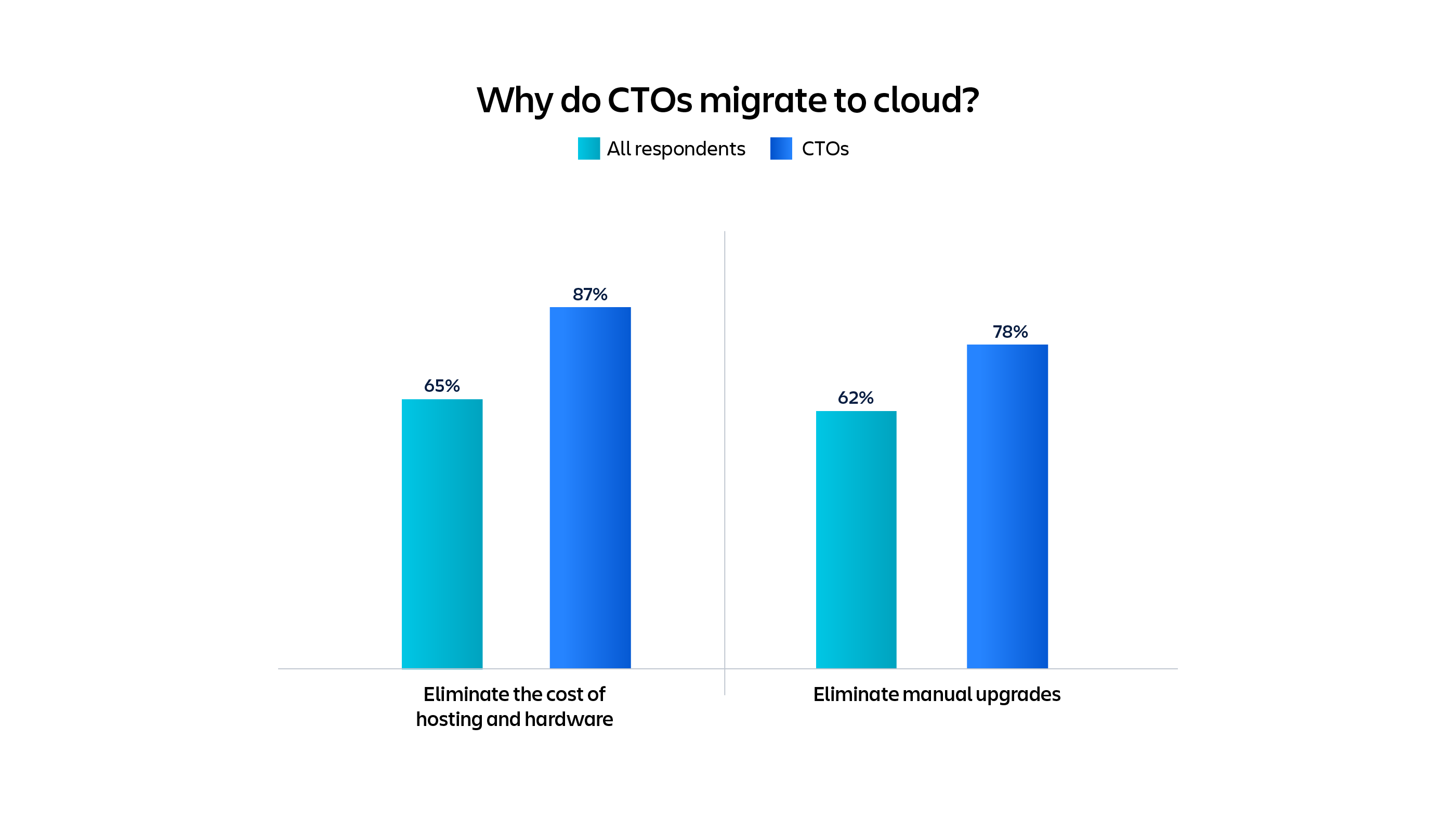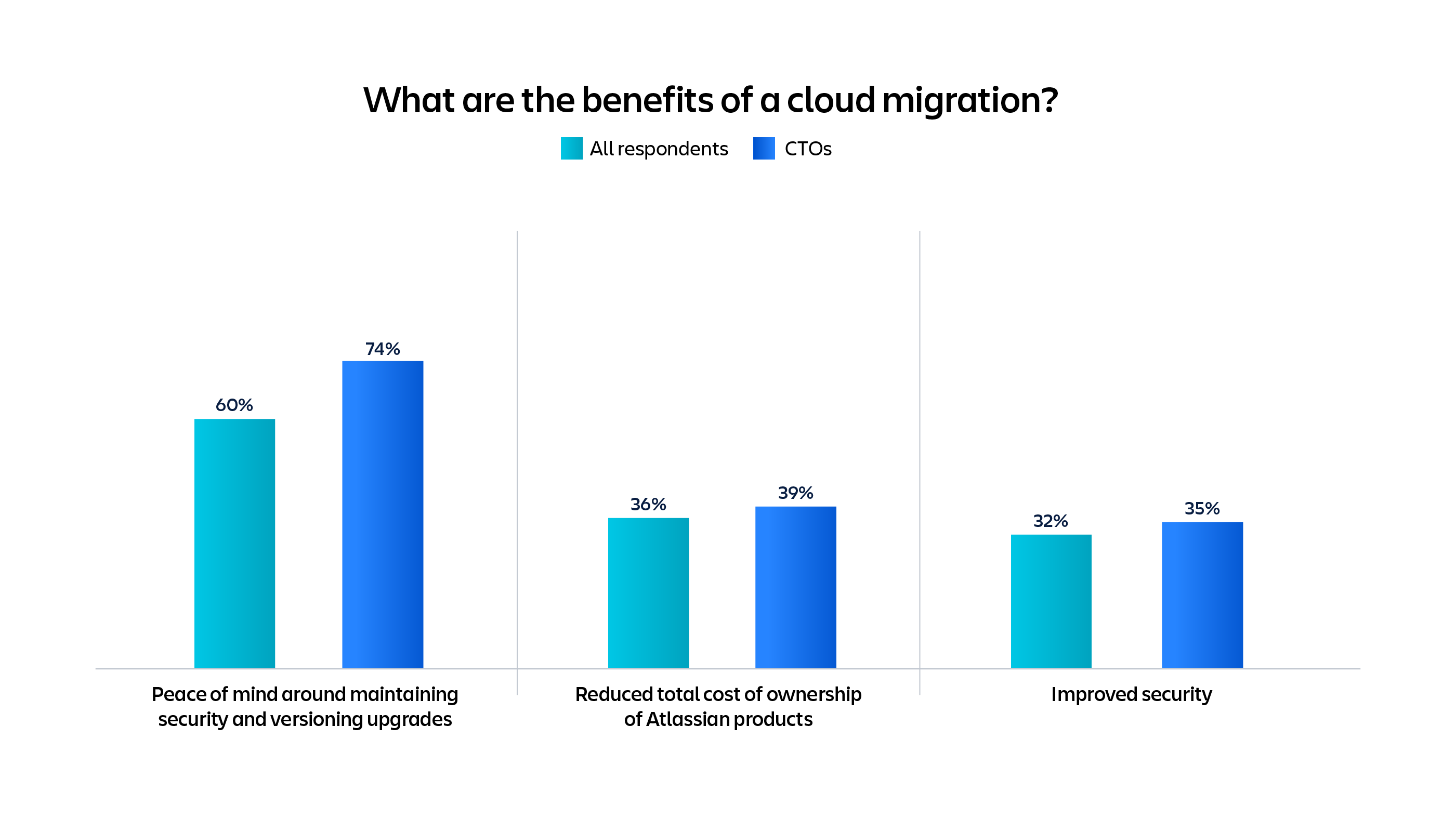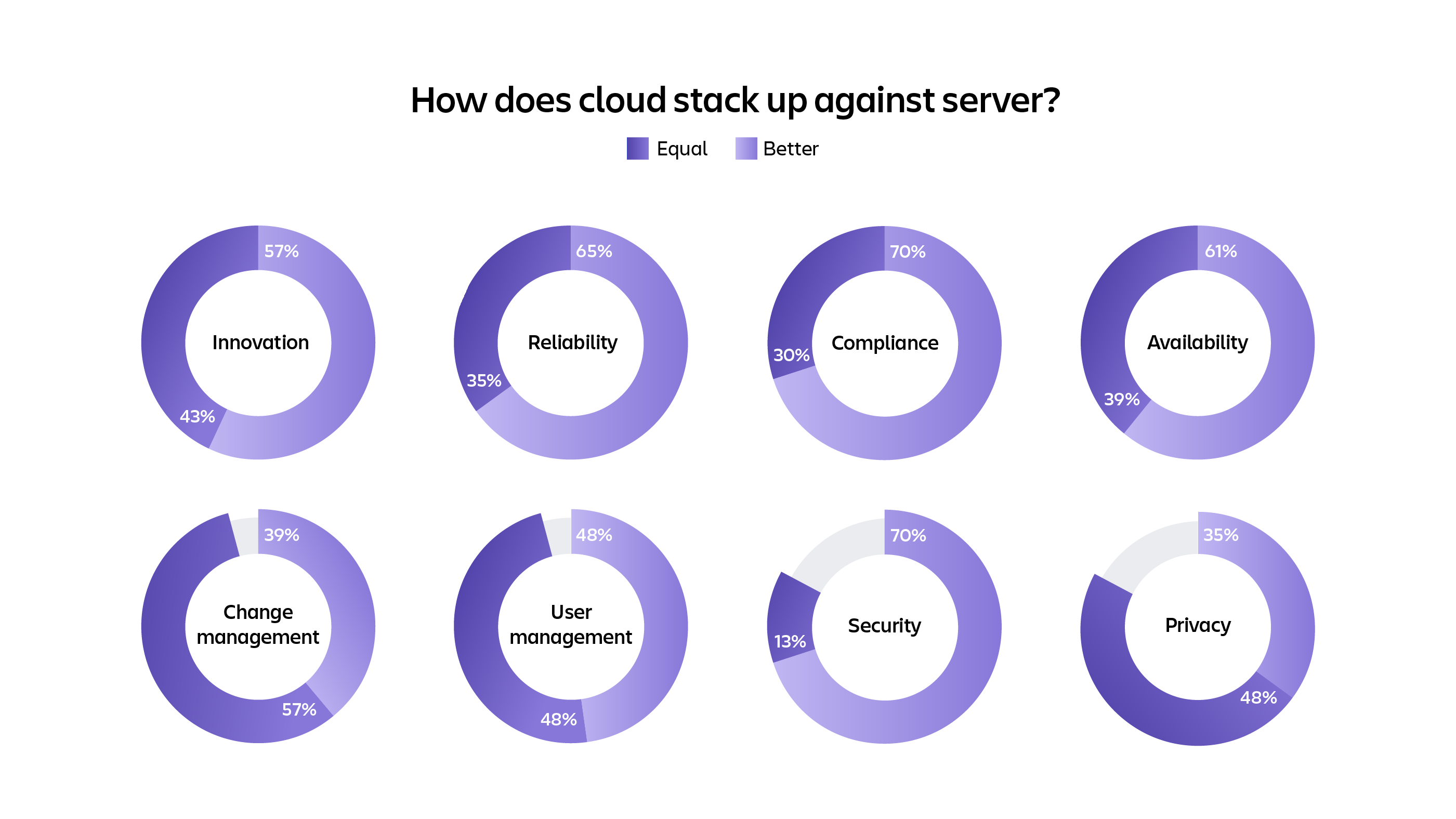What do CTOs think of cloud migration?
Tech leadership offers valuable perspective on cloud – it’s worth paying attention to, no matter your role.
In discussions about where business priorities and technology intersect, CTOs are the linchpin. They’re in the room for high-level business discussions, and they understand how the proverbial tech sausage is made. This puts them at the forefront of understanding how business priorities fit with cloud computing and where high-level strategy meets tech execution.
For these reasons, the CTO perspective on cloud is a unique and valuable one – worth paying attention to no matter what your own role in an organization might be.
CTOs are more likely than the average person to want to eliminate hosting costs (read: save money) and ditch manual upgrades (save both IT time and money) – likely because they understand both the leadership mandate to optimize costs and just how much time, energy, and money tech teams spend on server maintenance.
They’re also more likely to say migration gives them peace of mind (since a trusted vendor now handles upgrades, security, and incident management instead of leaving that burden – and its consequences – on the shoulders of their IT teams).
We know all this because when we asked 300+ customers about their migration to the cloud, these are the answers CTOs gave us. Their priorities, reasons for cloud migration, and the benefits they lauded stood out from the general answer pool.
So, what else does the top tech leadership in a company think about cloud? Here’s a deeper look at what our research found:

Ask the average person why their company migrated to cloud, and 65 percent will tell you they wanted to eliminate the costs of hosting and hardware. Another 62 percent say they wanted to do away with manual upgrades.
Ask CTOs specifically and both of those answers become even more important: 87 percent say they made the move to eliminate costs and 78 percent cite manual upgrades as a key reason. That’s a 22 percent jump in the importance of costs and a 16 percent leap in the importance of eliminating manual upgrades.
Frankly, having our engineers or IT professionals manage our systems on-premise is a waste of time and money. If there’s a company that already has amazing products, why not have them do it? That way, we can spend our time working on the things that we’re good at.
Evan Lerer, Director of Engineering at Redfin
Cloud benefits for CTOs
Ask CTOs about the benefits they realized after a cloud migration and they are 14 percent more likely to cite peace of mind around maintaining security and version upgrades.

This makes a lot of sense. After all, CTOs are typically responsible for the technical efficiency of their companies. Reducing costs and time are no-brainer goals. And finding out that you’ve effectively removed that maintenance from your team’s plate? That’s a benefit a CTO is going to sit up and notice – perhaps more than anyone else at the company (except maybe the people whose to-do lists just dropped by half).
The second most oft-cited benefit of cloud for CTOs is reducing total cost of ownership. Yet another no-brainer since one of the top challenges facing CTOs is budget constraints, according to this 2020 research.
The third most commonly mentioned benefit on our CTOs’ radar was improving security. And yet again, outside research dovetails with our own findings, with a strong trend of CTOs outsourcing security to trusted vendors. In addition to moving to cloud, the survey says 40 percent outsource cybersecurity and 80 percent don’t even have an in-house security team.
So, how long did it take CTOs to see the fruits of their cloud migration labor? A whopping 84 percent say the answer is less than six months. That peace of mind, improved security, and lower cost happened fast for the vast majority of respondents.
How does cloud stack up against server?
In the ongoing debate of cloud vs. on-premise, CTOs are coming in strong with a preference for cloud. In fact, the 2020 Global CTO survey found that 85 percent of CTOs have implemented cloud. And they typically report that the majority of work takes place in the public cloud.

In our own survey, 100 percent of CTOs said innovation, reliability, compliance, and availability are better or equal in cloud. And 96 percent said change management and user management are better or equal.
In other words, a move to the cloud means things like reliability and change management either improve – sometimes vastly – or (at least) stay just as good as our server products.

Surveyed CTOs also report high savings across several categories after a move to cloud: 30 percent say their admins cut time commitments by more than half (freeing up those admins for more strategic work). And 37 percent said they cut costs by at least 21 percent.
CTOs are impressed with migration speed
For those who haven’t done a migration before, it can look complex – a bit like standing at the bottom of a mountain you’re about to hike. But, as with hiking, sometimes things look bigger and badder than they really are. You keep putting one foot in front of the other and, before you know it, you’re gazing down at those lakes from the peak.

For more than half of our CTOs, the mountain wasn’t quite as daunting as they thought: 53 percent said migration was faster than expected (compared to 33 percent of all respondents) and 42 percent said it was easier (compared to 40 percent of all respondents).
CTOs and the move to cloud
Industry attitudes toward cloud are overwhelmingly positive – and CTOs are leading the charge.
In some cases, the move to cloud is driven by cost and time considerations. But it’s also likely about innovation. As Gartner found in their 2019 survey, 59 percent of CTOs say innovation programs are the primary focus on their position.
In other words, CTOs are walking the fine line between the practical business goals of saving time and money and the forward-thinking goals of innovating and staying ahead of the competition.
And both those goals align perfectly with a move to the cloud.
Considering your own move to cloud and need more insights? We’ve got you covered.


